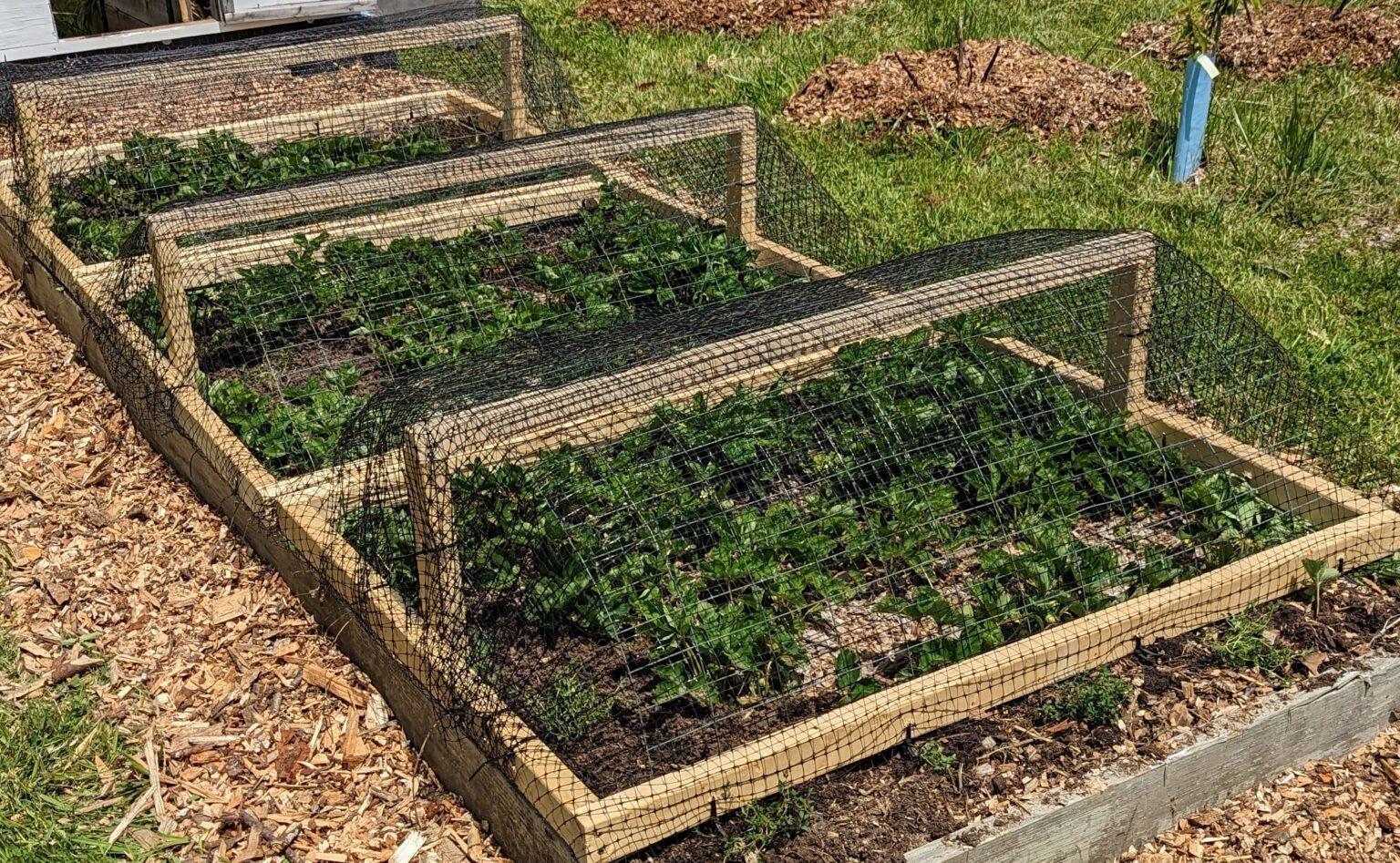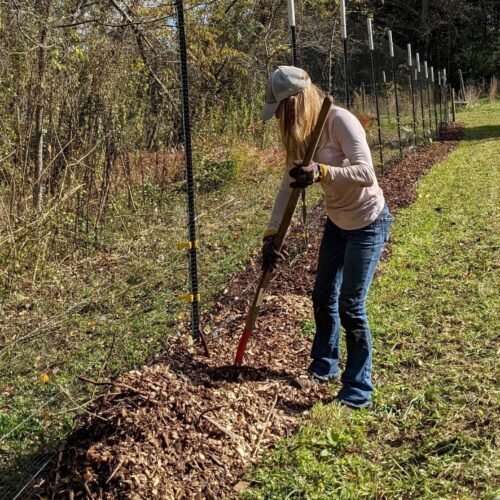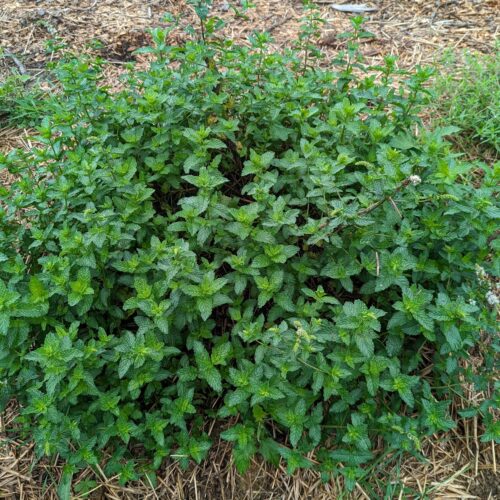The actual definition of gardening: the practice of growing and cultivating plants for birds, rabbits, deer and insects to consume!
The most confounding thing about growing plants is that the grower is competing against a host of critters for the harvest. Here are a few of the most troublesome:
- Groundhogs
- Rabbits
- Birds
- Deer
- Insects
Groundhogs, as their name suggests, live in warrens under the earth and know no limit when dining on your garden crops. They in particular like beans and greens. They are active during the day.
Rabbits also live in warrens underground and are more active at dawn and dusk. They will devour greens, preferring kale over arugula, clover and of course, carrots.
Birds in general tend to have a more varied diet, offering help to the gardener by controlling insects. Barn swallows and bluebirds are excellent at insect control. Bluebirds and blue jays also love berries.
Deer enjoy a diet rich in berries, grapes and grape leaves, grasses, apples, arborvitae, and your favorite shrubs. Green Giant Arborvitae, however, is deer safe.

Insects are a broad category that include both beneficials and pests. A few are both. A brief list of pests follows:
- Aphids
- Japanese beetles
- Caterpillars
- Yellow jackets
Aphids are piercing sucking insects that ingest and excrete plant sugars. The excretion is called honeydew, which is prized by ants. In the case of large aphid populations, the sugary excretion supports the growth of sooty mold. The presence of ants climbing about on your plants is a good indication of an aphid population. Some can spread plant diseases. If the infestation is small, wait it out. A favorite of ladybird beetle larvae and adults is the aphid. They have a voracious appetite and will clean up an infestation for you!
Japanese beetles spend most of their life in the ground as a grub feeding on grass roots. The adult emerges in summer to skeletonize the leaves of linden trees, grapevines, soybeans and roses, to name a few of their favorite plants. As their name suggests, they are non-native, but are naturalized in many parts of the country. If you get out early in the morning, you can pick them off your plants by placing a cup with water and soap beneath the leaf, and they will drop into it. They are good at feigning death! Alternatively spray with AzaSol (6% azadirachtin), which acts both as an antifeedant and an IGR (insect growth regulator). Always follow label directions when using a registered pesticide. Some people have success using kaolin clay (Surround® WP). It works by masking the leaf to the insect.
Caterpillars are the immature stage of moths and butterflies. The imported cabbageworm, cabbage looper, and diamondback moth all love Cole crops. Cole crops belong to the mustard family and include kale, broccoli, cabbage, Brussels sprouts, cauliflower, and mustard. The larvae are voracious eaters and will reduce your leafy crop to shreds, if left untreated. Fortunately, there are a number of control measures you can take. The first is to stagger your planting throughout the growing season. This technique is termed avoidance. Plant seeds every two weeks for a continual harvest. The second strategy is monitoring. Although these caterpillars are small and green (stealthy), they are messy. Look for holes in the leaves and their droppings (frass). Finally, spray with AzaSol, or BT (Bacillus thuringiensis). Always follow label directions when using a registered pesticide.
Grape berry moth and the light brown apple moth are caterpillar pests of grape and apple, respectively. Apply Altacor® (35% Chlorantraniliprole) for control. Chlorantraniliprole is a low-toxicity synthetic insecticide with a unique mode of action. It acts on the insects’ ryanodine receptors, which stop feeding upon ingestion, causing paralysis and death. Always follow label directions when using a registered pesticide.
Yellow jackets are vespids (wasps). They are predatory and are generally regarded as a form of biocontrol, and therefore generally beneficial. Most are black and yellow, some are black and white, such as the bald-faced hornet. Though they are unlikely to cause issues with your harvest directly, they may in fact interfere with your ability to harvest! Their diet consists of carbohydrates (fruits, flower nectar) and protein (insects). They build their nests from wood which they chew to make a papery pulp. Yellow jackets build their nests in trees, shrubs, protected wood structures, and in the ground. They have lance-like stingers, and can (and will sting) repeatedly, injecting a venom that can be painful. They have a short temper, and if you happen to be near their nest weeding or pruning, you will get stung! Okay, you are now forewarned.
Just a note on the difference between wasps and bees. Bees (such as honeybees and bumblebees) are pollinators. Some are solitary, while others live in social groups (hives). They have a barbed stinger which is ripped from their abdomen, so they can only sting once. From this perspective, they generally are docile, particularly during a nectar flow. Bees are essential to crops, such as apples, peaches, pears, cherries, almonds, avocado, strawberries, blueberries, cranberries, blackberries, raspberries, coconuts, watermelons, tomatoes, and sunflowers. Bees collect pollen and nectar, which is how they make honey. They are vegetarian.
Wasps on the other hand, are carnivorous and feed on insects, many of which are pests. In the latter case, if their nest is out of harms’ way, leave them be. The nests are annual, and will die off in the fall. If they conflict with your gardening activity, there are a number of effective wasp sprays. Control is best left to the professional.
Strategies for Control or Avoidance of Damage Caused by Birds and Larger Animals
Here are a number of techniques I have used with varying degrees of success in minimizing losses due to birds and larger animals.
- Fencing
- Raised beds
- Straw bales
- Greenhouse
- Mesh
- Electric fencing
- Bird Scare
- Havahart® Traps
- Plant trap plants
Fencing
A fenced in garden (4’ high) will serve to exclude groundhogs and rabbits if the wire fencing has a small enough mesh. Groundhogs can scoot under fencing, and rabbits will dig under them. So to increase its effectiveness, bury the fence wire in the ground to at least 6” deep.

The Raised Bed
I can’t tell you why, but ground level plantings are more prone to predation than a simple raised bed. I have used 2x12s to build raised beds with no other protection, and they seem to be successful. Early planting of sugar snap peas followed by cucumbers have done well. Of course, the acid test are beans. Both groundhogs and rabbits love beans. So, I have planted beans in a raised bed made from straw bales. I’ll follow up with that in a later blog.

The Straw Bale Garden
Straw bales are 14” high. Prep them ahead of time by soaking with water, then adding a liquid NPK fertilizer to initiate composting. Allow at least 30 days before planting into it. Add a 2” layer of compost, and plant seed or plants into it. This raised bed seems to be out of sight for the large rodents.

The Meshed Hoop
Another technique that you might try, and I have had success with are removable plastic mesh hoops to keep birds from strawberries. I have also built a modification of the mesh enclosure for blueberries that likewise worked to protect the berries from birds.
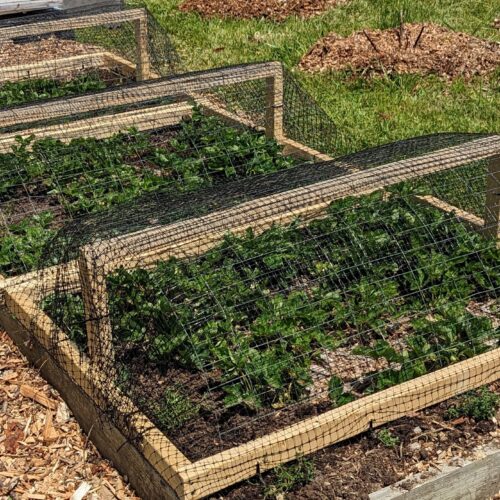
The Greenhouse
We grow tomatoes (Purple Cherokee) in our hoophouse. Since this is a long-season beefsteak tomato, I wanted to protect it from blight diseases, which it does very well. I do keep the doors open to allow pollinators in, and last year, it also allowed in hornworm. Look for foliage being stripped wholesale. We collect the hornworms and feed them to our fish.
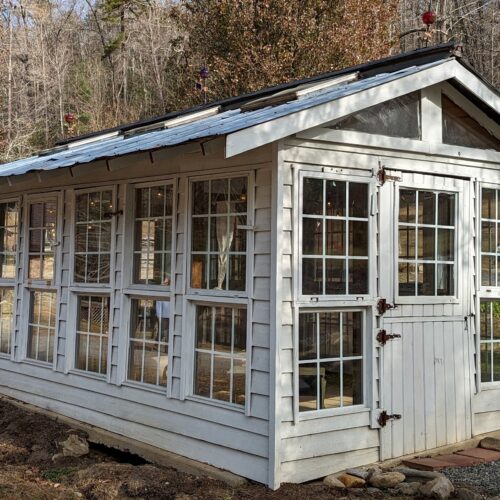
The Hydro Pans
Another successful technique is to build a hydroponic system that is waist high. Float plants in net pots and rigid foam board. Add a bubbler to aerate, and you have a hydroponic system. We grow all our greens in this way, altogether avoiding predation by rabbits and groundhogs.
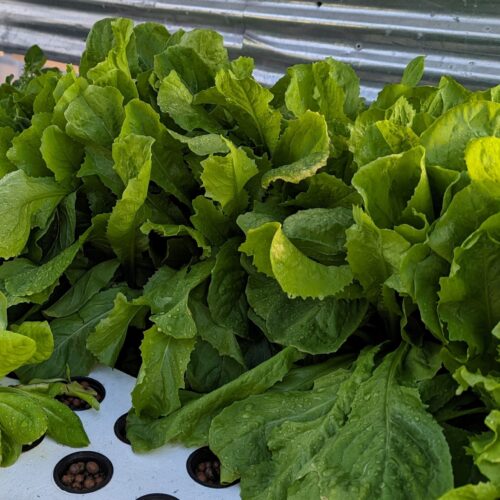
The Electrified Fence
Wiring a perimeter with a solar-powered electric fence to shock and exclude deer sounds like a great idea. It has been a disappointment. For one thing, the electric fence can be easily ground out be growing weeds. For another thing, it is not a stand-alone protection. It needs to be used in conjunction with fencing. Unfortunately, for deer exclusion, the fence needs to be a wire mesh, 8’ high. A task for another time!
A solar fence in conjunction with wire fence. Mulch the fence line to keep weeds at bay.
Bird Scare Devices
I have been experimenting with several bird scare devices in our vineyard. These include a bird kite, the BirdGard®, a sonic device that emits predator (falcon) cries and birds in distress randomly, and an inflatable tube man (modern-day scare crow). The kite relies on wind to make it fly. On calm days, it hangs on the string, in effect frightening no one. Of the three devices, the tube man has been the most effective in crop protection to date.
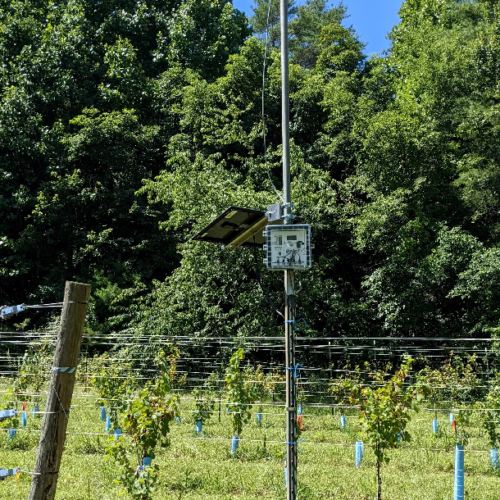
Havahart® Traps
Large traps are useful for catching groundhogs and racoons. Groundhogs feed during the day, and we use chicken feed to lure them into the trap. Racoons hunt at night, and they eat chicken! But I have found they are easily lured using game fish food. Check the traps daily. Using traps in addition to some of the other methods discussed, will help you be more successful with your harvest.
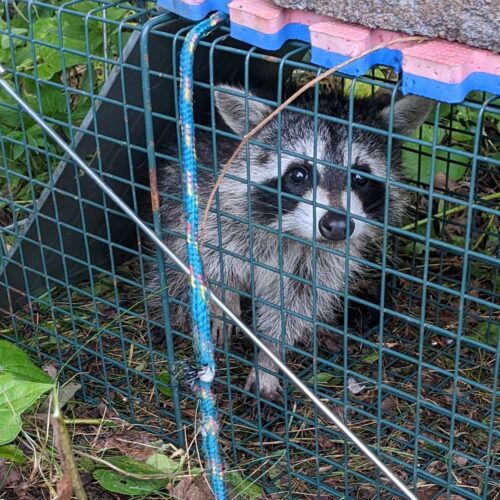
Plant Trap Plants
I have not done this intentionally, but if you have the room, plant crops that groundhogs and rabbits like away from your garden. Our lawn and fields are full of red and white clovers. We did not plant it, but there is so much of it, it seems to meet the rabbits’ appetite, acting very much like a deterrence!

Field Crops of Less Need of Protection
I have found that I can grow sunflowers, winter squash, and herbs without protection from either groundhogs or rabbits. Some of the herbs and flowers that are typically left alone include:
- Sunflowers
- Winter squash
- Rosemary
- Oregano
- Peppermint
- Thyme
- Parsley
- Lavender
- Anise hyssop
- Bee balm
Sunflower, winter squash, and mint
I hope some of these suggestions are useful to you. Wishing you a bountiful harvest and harvest season!
Join us next week as we talk about different kinds of caterpillars.
~ Signing off for now, Joe

